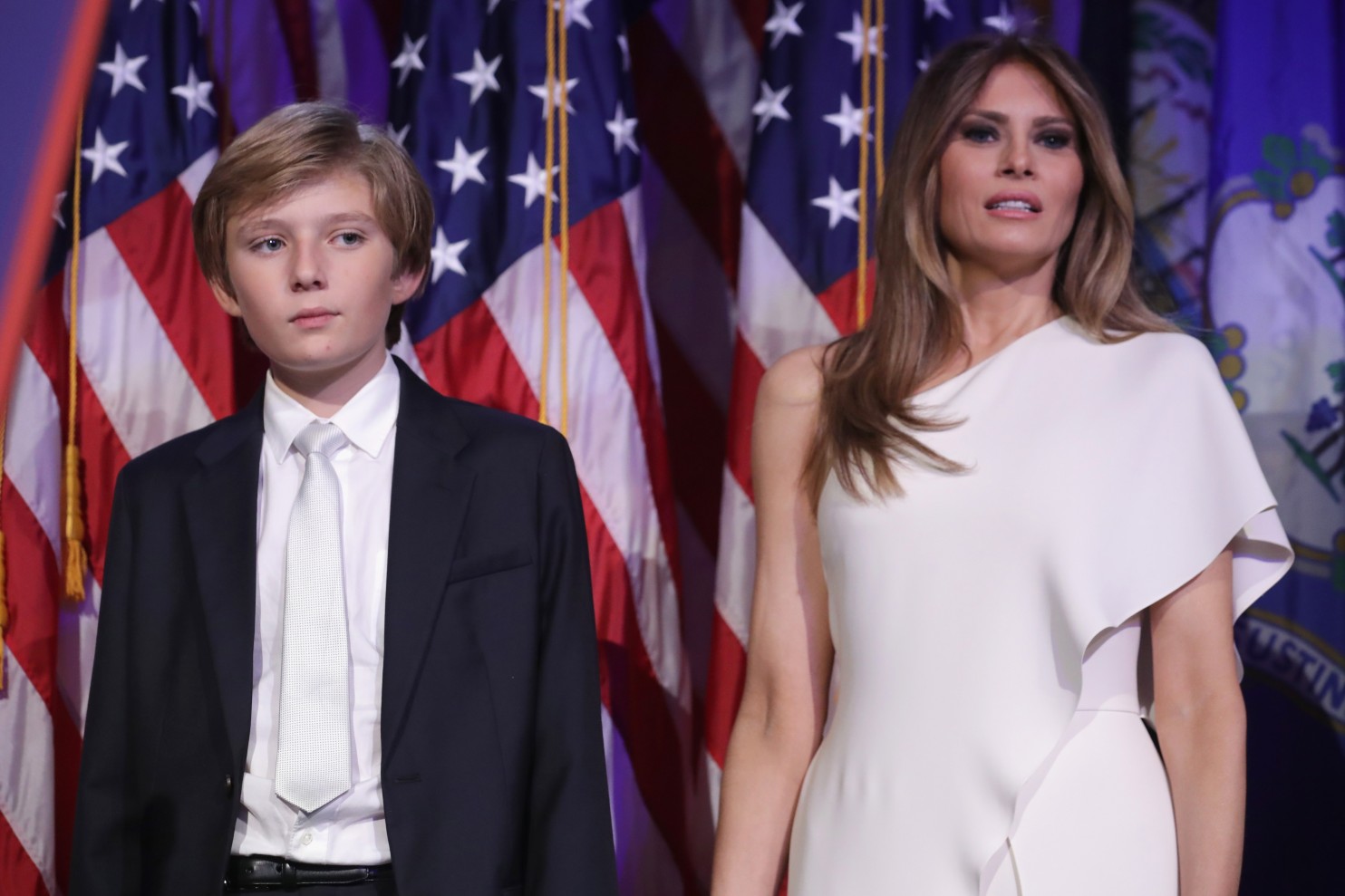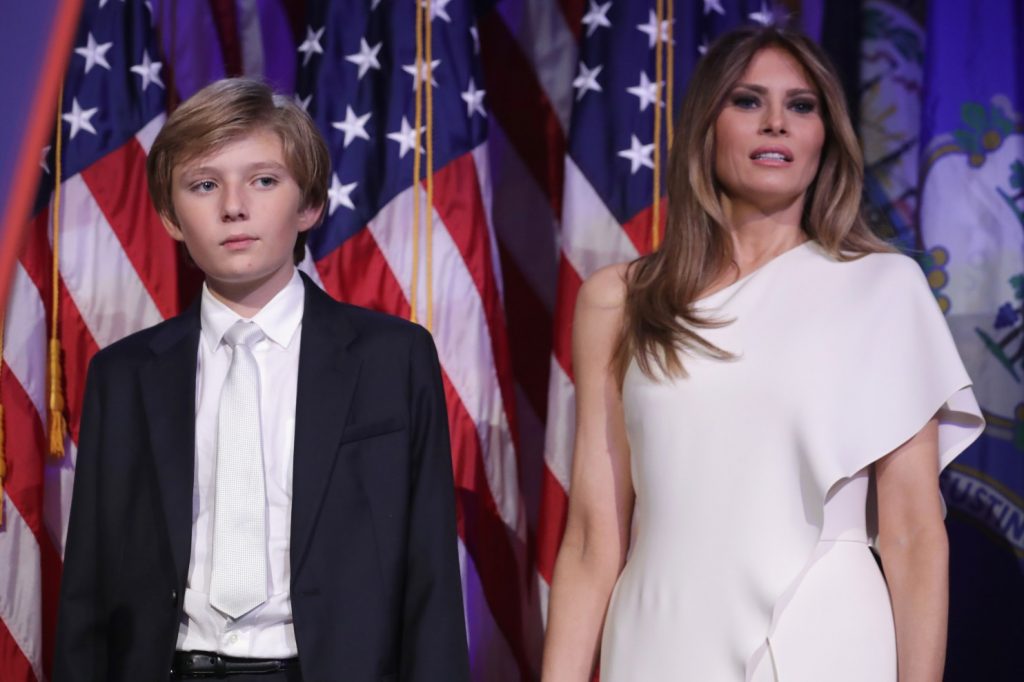
It’s one of the most enduring rituals of the presidential transition: On Inauguration Day, one first family returns to its home town, while the next moves into the White House.
But come January, this tradition will be dramatically upended, as Donald Trump’s wife, Melania, plans to continue living in Manhattan with their young son Barron, at least until he completes the school year.
It could create a striking disconnect in Washington, where, in another break with tradition, the Obamas are setting up their new home only a few miles away, similarly delaying an out-of-town move to allow their daughter Sasha to finish high school here.
Michelle Obama has signaled a desire to stay engaged in advocacy work, and her presence in the capital could overshadow Mrs. Trump, who for at least the first six months of her husband’s presidency will be something of a first lady in absentia.
Yet there’s no reason to think the White House will operate much differently without a resident first lady. The East Wing’s bureaucracy will keep churning along. State dinners will still be scheduled. Tour groups will be accommodated, and the White House residence will be cared for by a team of butlers, housekeepers and florists.
“The White House adjusts to its occupants, and the occupants adjust to the White House,” said Anita McBride, an adviser in the George W. Bush administration who served as chief of staff to Laura Bush. “It’s different, but, like everything in this election, the playbook is being rewritten every single day. The role of first lady is really defined by each occupant.”
There may be fewer initiatives from the first lady’s office in the first few months of the administration, but McBride predicts the Trump team will nonetheless hire a staff for his wife and roll out programs eventually. For the ceremonial functions, she said, “what I’m hearing is that when and if needed, Mrs. Trump can get here to be able to participate in events, but he also has other members of his family who can support her in those duties.”
It’s been decades since daughters, sisters or nieces have stepped into the role of first lady, but that has happened. Jacqueline Kennedy, the glamorous first lady who cherished her private life, traveled extensively during her time in the White House, and President Kennedy’s relatives filled in when she was away. Bess Truman likewise spent most of her summers in Missouri with her daughter, Margaret.
“Mrs. Truman felt that Margaret was exposed to a lot of East Coast power and a lot of celebrity, and she felt that her daughter should have a good Midwestern upbringing and get her head on straight,” said Myra Gutin, a scholar at Rider University who studies first ladies.
Other first families have come to the White House with young children, and most of them — President Obama, as well as Jimmy Carter and Bill Clinton — enrolled them in local schools midway through the year.
Yet an opposite trend has also taken hold in Washington, as more and more members of Congress have left their families back in their home districts. For many, it’s been a way to maintain closer ties with voters and signal their independence from Beltway culture. Yet some critics believe the practice has heightened partisanship because lawmakers now bolt from Washington every weekend and spend very little time interacting with one another on a casual basis.
Many first ladies have fantasized about escaping the national spotlight, said Gil Troy, a historian at McGill University and author of “The Age of Clinton.”
“It’s the unspoken expectation that the presidency is a family, and certainly a couple’s responsibility,” he said. Without his wife and youngest son in the White House, Trump “might end up missing all those little touches and all those sources of happy news that actually can boost a president.” The presidency is one of the loneliest jobs in the world, he added. “Having your spouse around can be very normalizing. . . . The first lady can give a little bit of wind to the political sails of a president, so they should be conscious not to lose that opportunity.”
The job of first lady comes without a salary; its duties are not written into the Constitution. Yet the structural apparatus of the White House has grown to support the unofficial position. The president’s spouse traditionally hires a social secretary and four or five staff members to oversee the planning of hundreds of events that take place each year in the White House. There is also a correspondence office and floral shop that, along with the chefs and team of staffers who maintain the family’s private residence, typically work more closely with the first lady’s staff than the president’s.
Whenever Bush traveled, her staff was capable of working with her from afar to arrange big events, said Bob Scanlan, who was a florist in the White House for 13 years and worked for the Clintons, the Bushes and the Obamas.
“There were incidences where there were dinners coming up and we would take photographs and the social secretary would email them to the first lady if she wasn’t in the house to see the mock-ups,” Scanlan said. “With technology, it’s a lot different.”
One of the first formal events at the White House is scheduled for shortly after the inauguration — the Governors’ Ball, officially hosted by the president and first lady — but the permanent staff is well accustomed to helping a new first family learn the ropes.
“There is a certain continuity,” said longtime White House pastry chef Roland Mesnier. “We had administrations where a first lady was not too involved with the run of the place because she was interested in other things” — notably, Rosalynn Carter and Hillary Clinton, he said. “It worked fine. Frankly, the social secretary knew very well how to run the place.”
Melania Trump made clear throughout her husband’s campaign that her 10-year-old son’s adjustment is her first priority. He will finish out the year at Columbia Grammar and Preparatory School in Manhattan, his father has said. Eight years ago, Michelle Obama seriously contemplated staying in Chicago with her young daughters because she did not want to interrupt their school year, said McBride, who helped Obama’s staff transition into the East Wing and now directs programming and national conferences for American University’s Center for Congressional and Presidential Studies. Mrs. Obama ultimately decided to make the move to coincide with the start of her husband’s term.
Some of the president-elect’s critics saw a dismaying symbol in the family’s decision to remain in their New York penthouse. “This gesture disdains DC as capital & hence further delegitimizes govt.,” tweeted the author Daniel Mendelsohn.
But Kate Andersen Brower, the author of two books about White House life, saw the decision as less political than practical.
“It strikes me that Melania is a creature of habit, and the upheaval of moving to Washington was too much at this time, but the enormous privilege of living in the White House would be hard to overlook for too long,” she said. “The protocol is you just do it. You just make it work.”
Helena Andrews-Dyer contributed to this report.

